









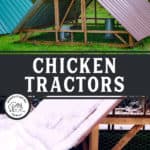
Having a chicken tractor is a great way to allow your meat chickens or your egg-laying chickens to free-range in a protected area from weather, sun exposure, and predators. Find out what is most important when buying or building a chicken tractor.
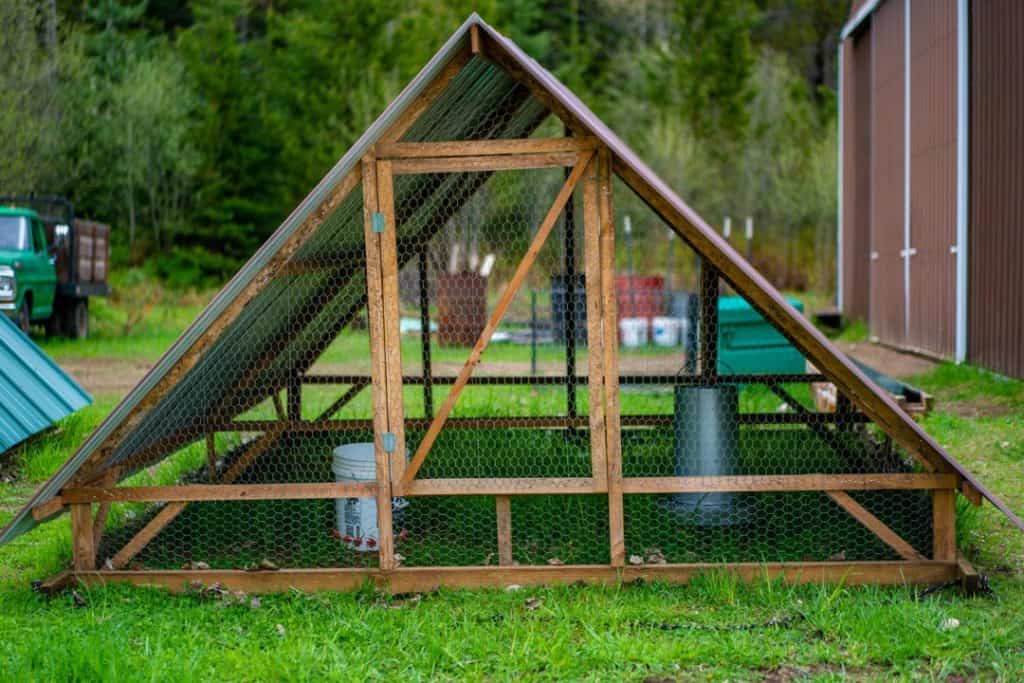
Why We Love Chicken Tractors
Since we raise meat chickens every year, we love the idea of them being free-range and roaming and pecking for as many critters as they can. Not only does this yield a healthier bird, but it also helps control our fly population when utilizing rotational grazing methods for our small homestead.
We’ve used chicken tractors for our meat birds, our turkeys and our egg-laying hens (though our hens are in a static coop, and we use the deep litter method during the winter months). You can use a moveable coop to your benefit, but because the best chicken tractor is so subjective, I’m going to share how you can make some minor adjustments for your specific needs.
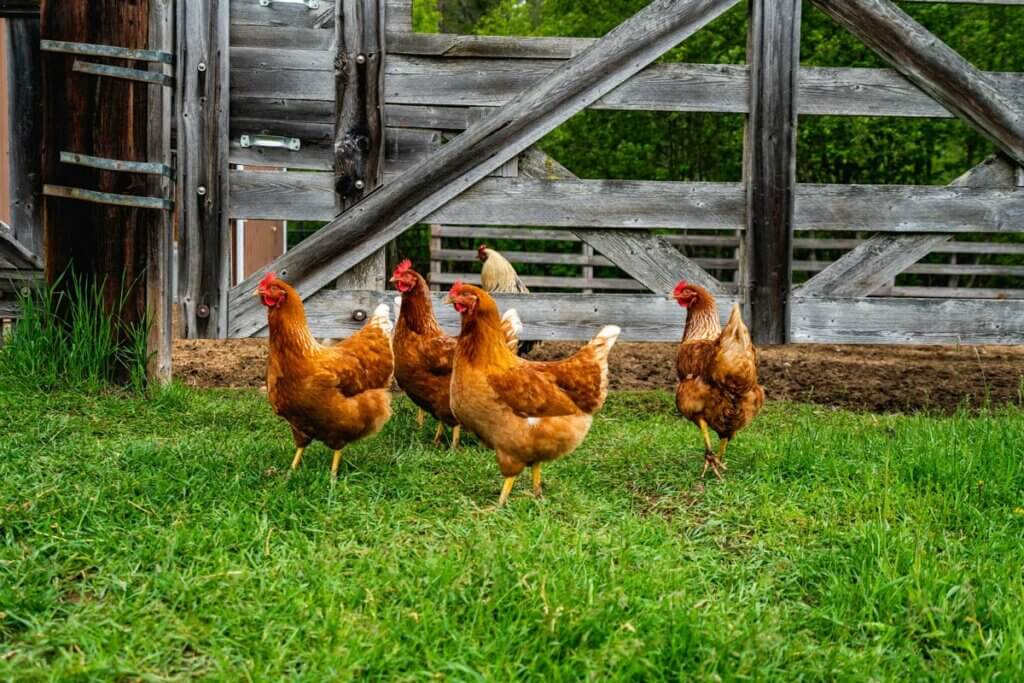
Why Should Chickens Free-Range?
Chickens are designed to get outside, scratch the ground and peck for bugs. It’s in their makeup.
The nice thing about this is, when managed correctly by regularly moving them, the pecking and scratching help by spreading manure and aerating the ground without allowing them to destroy one area of your yard completely.
In this post, I’ll share our DIY chicken tractor (or what I call the Idaho A-Frame) and some of the other coops we’ve used over the years. We’ve tried everything from Justin Rhodes’ Chickshaw to a Happy Farmer Mobile Chicken Coop and the Alumi-Coop.
Find out what we like most about each coop and which one(s) get our stamp of approval.
In the video above, I show you our Idaho A-Frame and everything we included to make it work for us at the time. Since the making of that video, we’ve been utilizing our main pasture with our chickens, and the Idaho A-Frame was just too cumbersome to move each day.
In the video below, I’m sharing some of the upgrades we’ve made and why we’ve chosen to make those changes. I want to share all these things with you so you can look at your own circumstances and know how to make an educated decision on which is the best chicken coop for you.
What is a Chicken Tractor?
First up, what is a chicken tractor? Essentially, it’s just a portable chicken coop that’s protected from the sun, weather, and predators. It’s a frame with an open floor so chickens can free-range, eat bugs, peck, scratch, spread their manure, and loosen the ground.
A chicken tractor is also portable so you can control where the chickens roam and allow them to benefit the land instead of destroying it from being cooped up in one area.
A Chickshaw is a little different in that it’s simply a place for your chickens to sleep at night. During the day, you’d let them out to free-range, needing some portable chicken netting to keep them confined to the space you want.
Chicken tractors are a great solution for egg layers, meat chickens, turkeys, and even raising baby chicks.
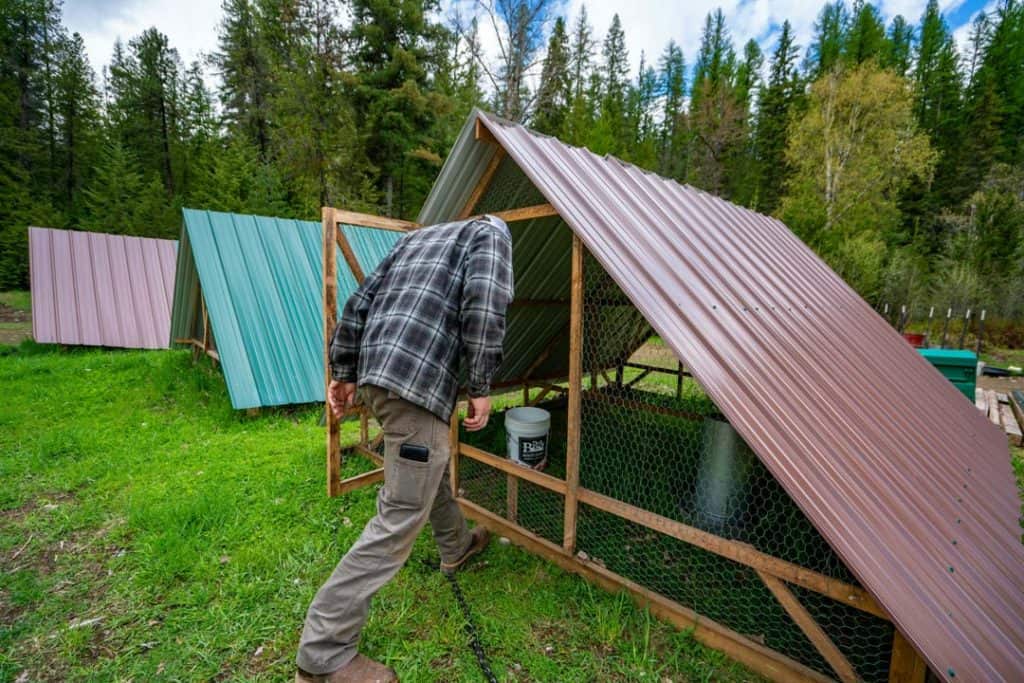
Features of a Chicken Tractor
If you look around you can find many different chicken tractor designs. Some of the basics will be:
- Moveable
- Adequate space
- Access to the ground
- Light-weight
- Roosting area
- Nesting box (if being used for egg-layers)
- Space for feed and water

Moveable
Chicken tractors must be moveable to be a true chicken tractor. By this, we mean it is not fixed to the ground like a static coop. It either needs skids or wheels on it to move around easily. In the videos above, I demonstrate moving both our Idaho A-Frame and the Alumi-Coop.
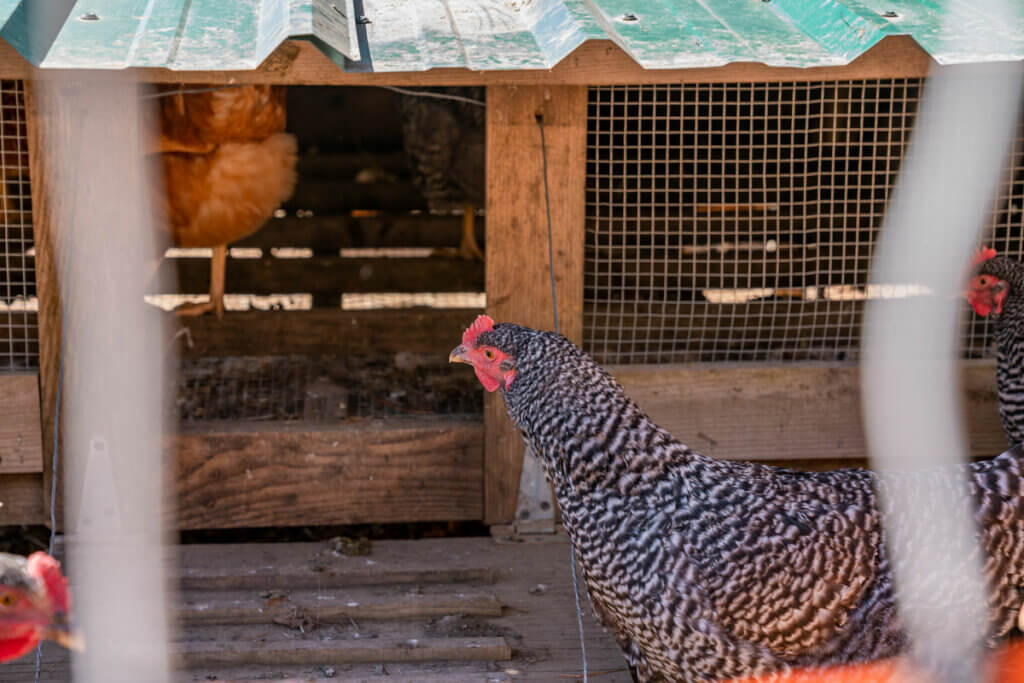
Adequate Space
Chickens need to have adequate room to move around and gain access to the ground. A general rule of thumb is to have four square feet per chicken for egg layers and two square feet per chicken for meat chickens.
Our Idaho A-Frame is 10×12 feet which is just about perfect for 50-60 chickens. We’re generally using three chicken tractors to accommodate our large number of meat chickens. The Alumi-coop comes in multiple sizes to suit your needs.
Whether you have a large or a small flock, it’s a good idea to buy or build a chicken tractor that’s the right size for you and your goals.

Open to the Ground
Your chicken tractor needs to be open to the ground or “floorless.” This allows chickens to roam around for bugs and peck and scratch to spread their manure. The Chickshaw option is floorless, so as the chickens roost and poop at night, their manure will drop to the ground and fertilize the grass.
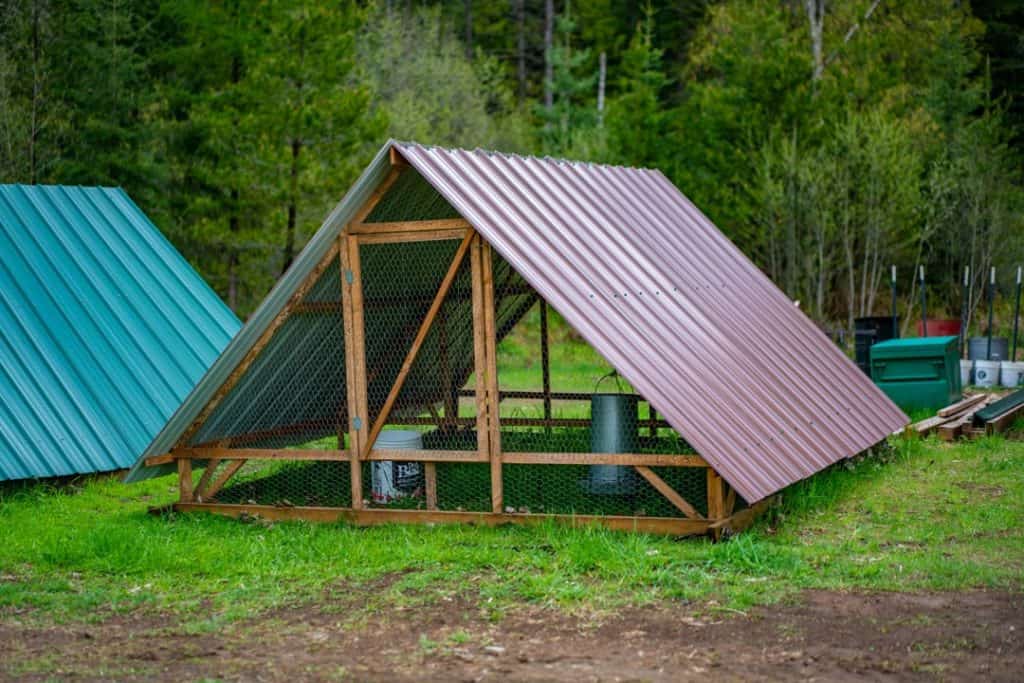
Provides Protection
What we love most about chicken tractors is that it allows our chickens to free-range in a protected environment.
A chicken tractor must provide protection from the sun, the weather (severe rain, wind and heat), and predators.
Depending on where you live, there may be coyotes, eagles, hawks or other predators, and you want to be sure your chickens are protected from them. Chicken wire around any open parts of the frame will keep both chickens in and predators out.
If you live in a particularly windy area, you may want to provide protection from the wind on two of the four sides of your chicken tractor so the chickens can shelter from the elements.

Durable
One of our requirements when it comes to building a chicken tractor is that it needs to be durable. We don’t want to have to spend a lot of time each year fixing up our chicken tractors.
Because of this, we chose to use a solid wood frame and metal roofing. You don’t necessarily need to build one as sturdy, but just know that by using less expensive materials (such as PVC and tarp) that you’ll need to maintain your tractors year after year.
This is why the Alumi-Coops are intriguing to me. They’re made from lightweight, durable aluminum that won’t rust or break down in the elements. Though they’re more expensive than a DIY Idaho A-Frame, they’ll also last a lot longer and need less maintenance.

Roost & Nest Boxes
If you’re using your chicken tractor for egg-laying chickens, there needs to be a place for them to lay eggs.
Adding some nesting boxes and a few extra supports where they can roost can transform your chicken tractor into a moveable chicken coop combination.
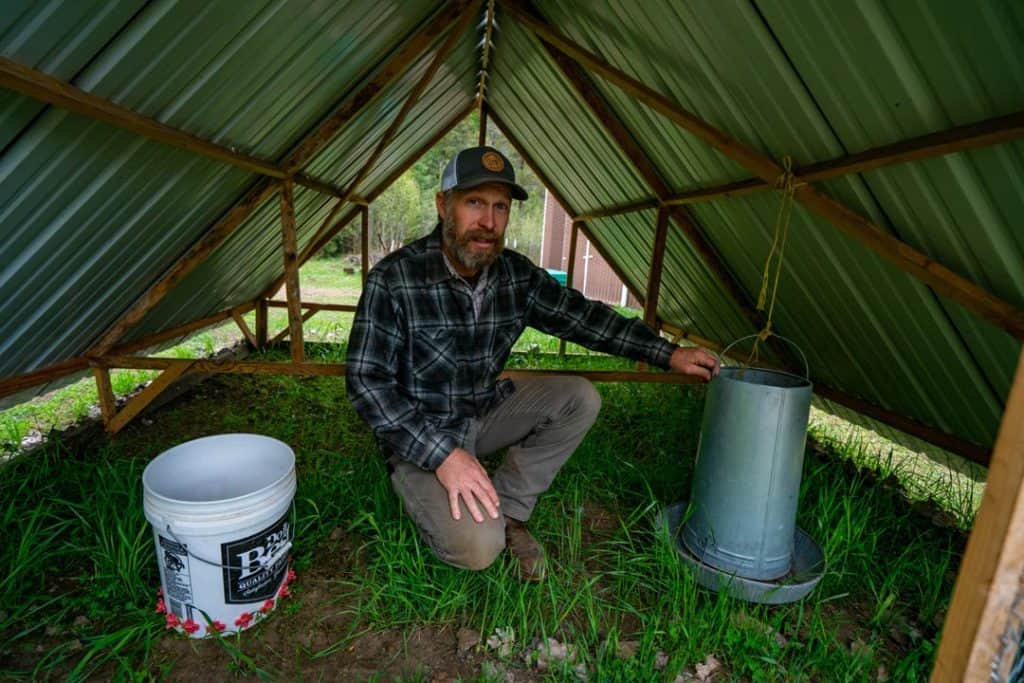
Which Chicken Tractor is Best?
When researching what kind of chicken tractor would best suit our needs, we didn’t find any exact plans that met all of them.
I started with a basic Joel Salatin-style chicken tractor. However, these plans are only 2 feet high, and I wanted to be able to access the chickens for an easier harvest of our meat birds and to care for any chickens needing attention (we also use them for turkeys, so the extra height is great).
Since we’re storing our mobile coops through the winter, I wanted a structure that could either hold the snow load or that would allow the snow to slide right off. I didn’t like the idea of having to take the metal roof off each year, so I went with an A-frame-style metal roofing (pictured below with the snow sliding off).
With the Alumi-Coop, you don’t need to worry about snow load during the winter because the easily removable canvas roof gets taken off and stored.
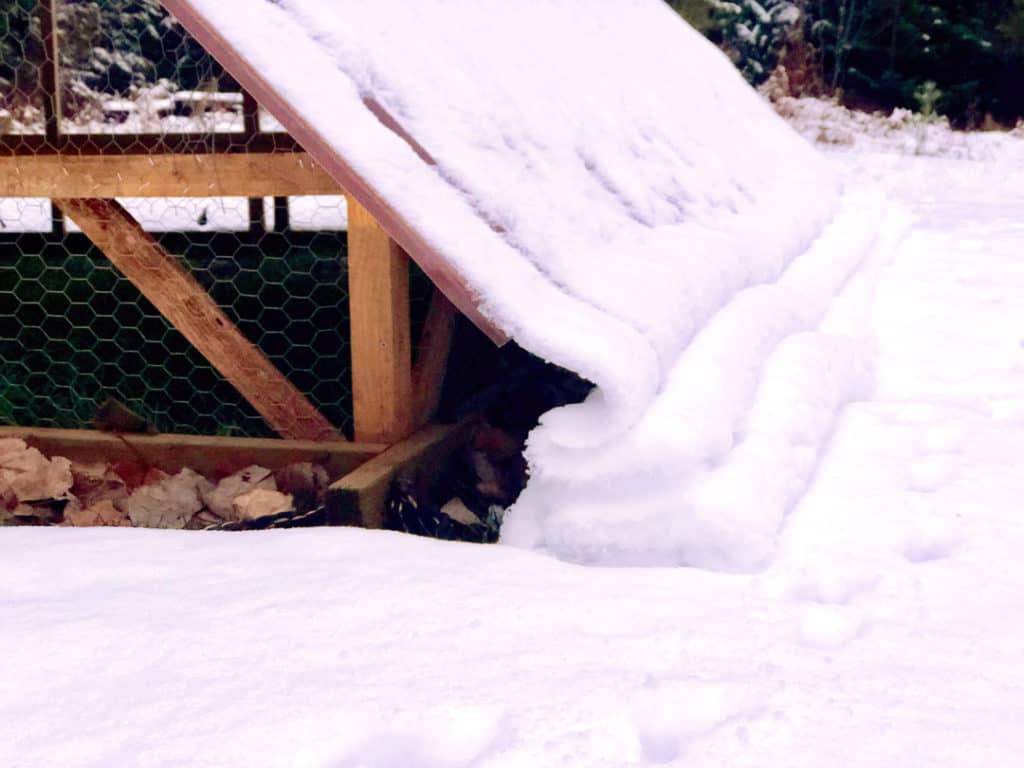
As our needs have changed over the years, we’ve found our Idaho A-Frame coops aren’t as easy to move on a regular basis through our rolling pastures. They’re not the lightest structures since they’re made of solid wood.
This is another reason the Alumi-Coop is better in our book. Its slick handle design pops the wheels up with ease, and the ergonomic handle is in the perfect position for easy moving. Though the larger model still weighs quite a bit, it’s easier to move than the Idaho A-Frame.

Where to Buy Alumi Chicken Coops
If you are looking to buy a chicken tractor instead of building one, reach out to Bud Miller with Superior Poultry Products. Mention that you saw the Alumi-Coop on our Homesteading Family YouTube video, and they’ll give you 5% off your purchase through the end of 2024. (Call Bud at 260-463-2919 ext. 1)

How We Move Our Chicken Tractor
Because our chicken tractor is on the heavier side, we’ve added simple lawn-mower wheels to the back portion of the frame (see the first video in this blog post). Then, to the front two sides, we’ve cut out the skids so they won’t get caught on any rough patches of ground.
If you look closely at the photo above, you can see the angle we cut out of the baseboard skids and the rope that we knotted and threaded through holes in the skids. Watch the video to see how I pick up the rope and push with my body to move the chicken tractor easily.
It’s important, no matter which chicken tractor you’re buying or building for yourself, that it’s easy to move on your own and for your specific needs (rough ground, rolling hills, etc.).
Various coop designs are moved in different ways. Some are moved with skids, some with wheels, some with a dolly or some even need to be loaded up on the bed of a truck (which is not ideal for rotational grazing).

Have Food & Water Available
Finally, but perhaps most important, when getting a chicken tractor (or building one yourself), is to ensure your chickens have food and water available at all times. Learning how to ferment our chicken feed generated healthier chickens and cost savings.
For your watering buckets, you’ll want to make sure you have at least one watering nipple for every one to two chickens. Also, make sure your feed container is sturdy so it won’t get knocked over. Use this guide to find the best chicken waterer for your homestead.
Go out and find what’s going to work well for you, do your research and build or buy the best chicken tractor for your needs.
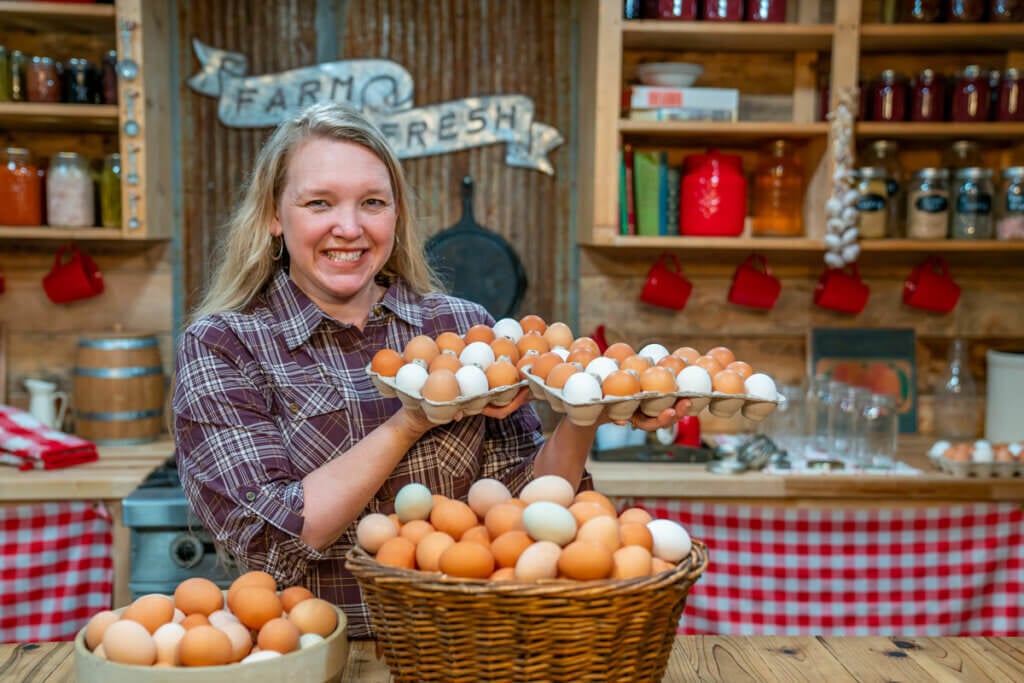
Wondering what to do with all those chicken eggs?
With all those backyard chickens you’re sure to have quite a few eggs on your hands. Check out all our resources on preserving eggs, including our most popular video on water-glassing eggs for long-term preservation.



















